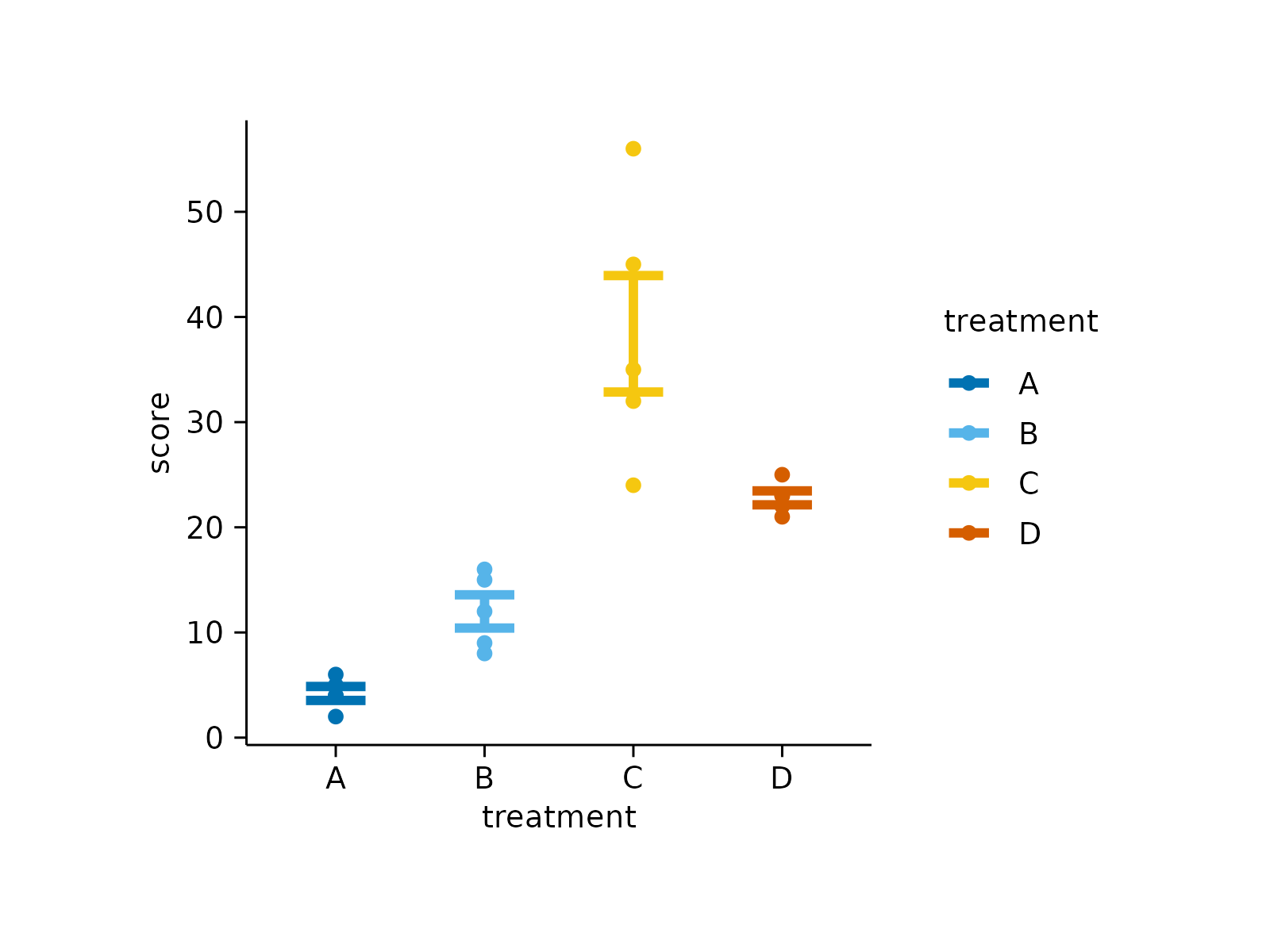add_sem_errorbar()adds the standard error of mean.add_range_errorbar()adds the range from smallest to largest value.add_sd_errorbar()adds the standard deviation.add_ci95_errorbar()adds the 95% confidence interval.
Usage
add_sem_errorbar(
plot,
dodge_width = NULL,
width = 0.4,
linewidth = 0.25,
preserve = "total",
...
)
add_range_errorbar(
plot,
dodge_width = NULL,
width = 0.4,
linewidth = 0.25,
preserve = "total",
...
)
add_sd_errorbar(
plot,
dodge_width = NULL,
width = 0.4,
linewidth = 0.25,
preserve = "total",
...
)
add_ci95_errorbar(
plot,
dodge_width = NULL,
width = 0.4,
linewidth = 0.25,
preserve = "total",
...
)Arguments
- plot
A
tidyplotgenerated with the functiontidyplot().- dodge_width
For adjusting the distance between grouped objects. Defaults to
0.8for plots with at least one discrete axis and0for plots with two continuous axes.- width
Width of the error bar.
- linewidth
Thickness of the line in points (pt). Typical values range between
0.25and1.- preserve
Should dodging preserve the
"total"width of all elements at a position, or the width of a"single"element?- ...
Arguments passed on to the
geomfunction.
Examples
# Standard error of the mean
study |>
tidyplot(x = treatment, y = score, color = treatment) |>
add_data_points() |>
add_sem_errorbar()
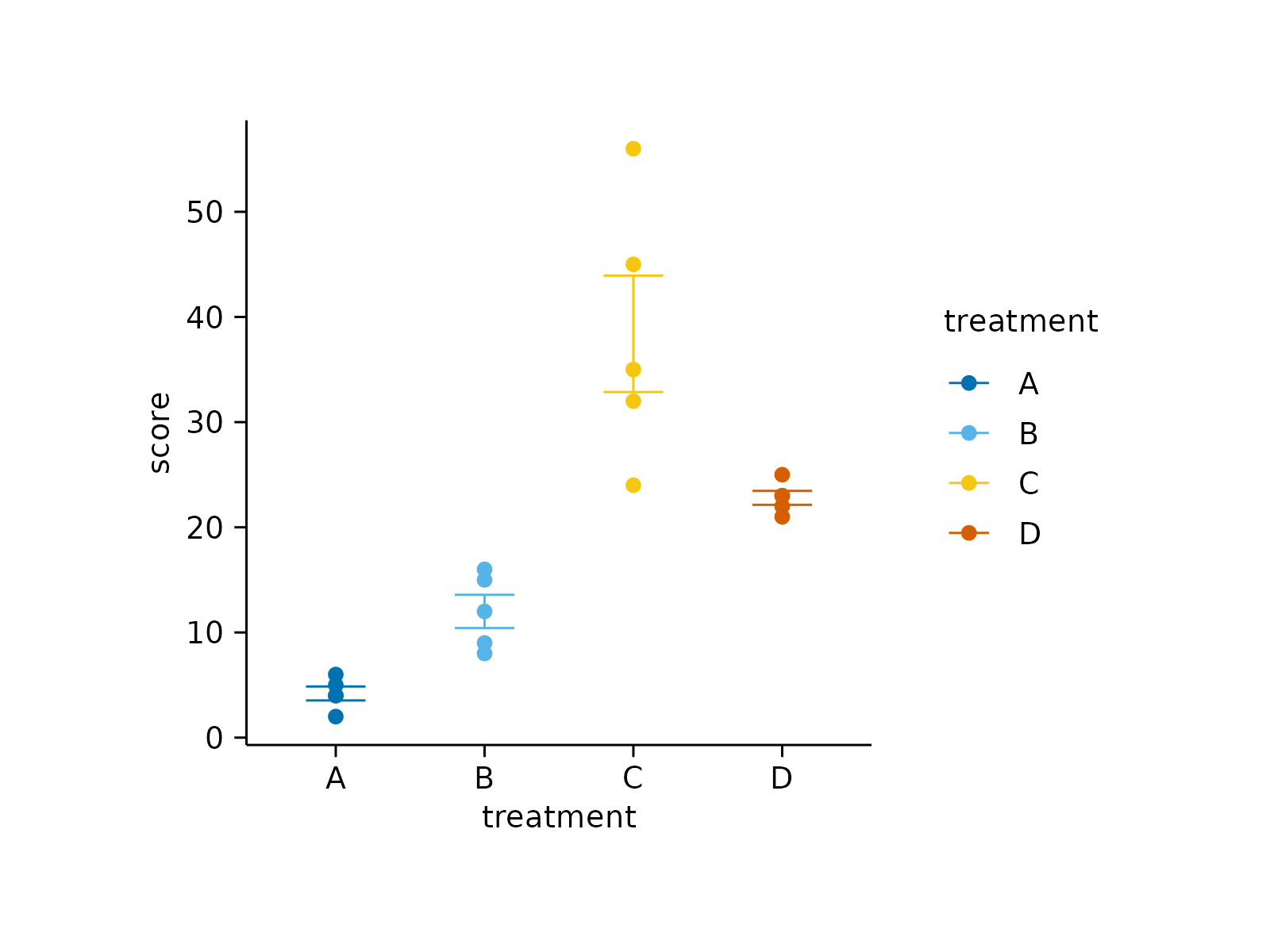 # Range from minimum to maximum value
study |>
tidyplot(x = treatment, y = score, color = treatment) |>
add_data_points() |>
add_range_errorbar()
# Range from minimum to maximum value
study |>
tidyplot(x = treatment, y = score, color = treatment) |>
add_data_points() |>
add_range_errorbar()
 # Standard deviation
study |>
tidyplot(x = treatment, y = score, color = treatment) |>
add_data_points() |>
add_sd_errorbar()
# Standard deviation
study |>
tidyplot(x = treatment, y = score, color = treatment) |>
add_data_points() |>
add_sd_errorbar()
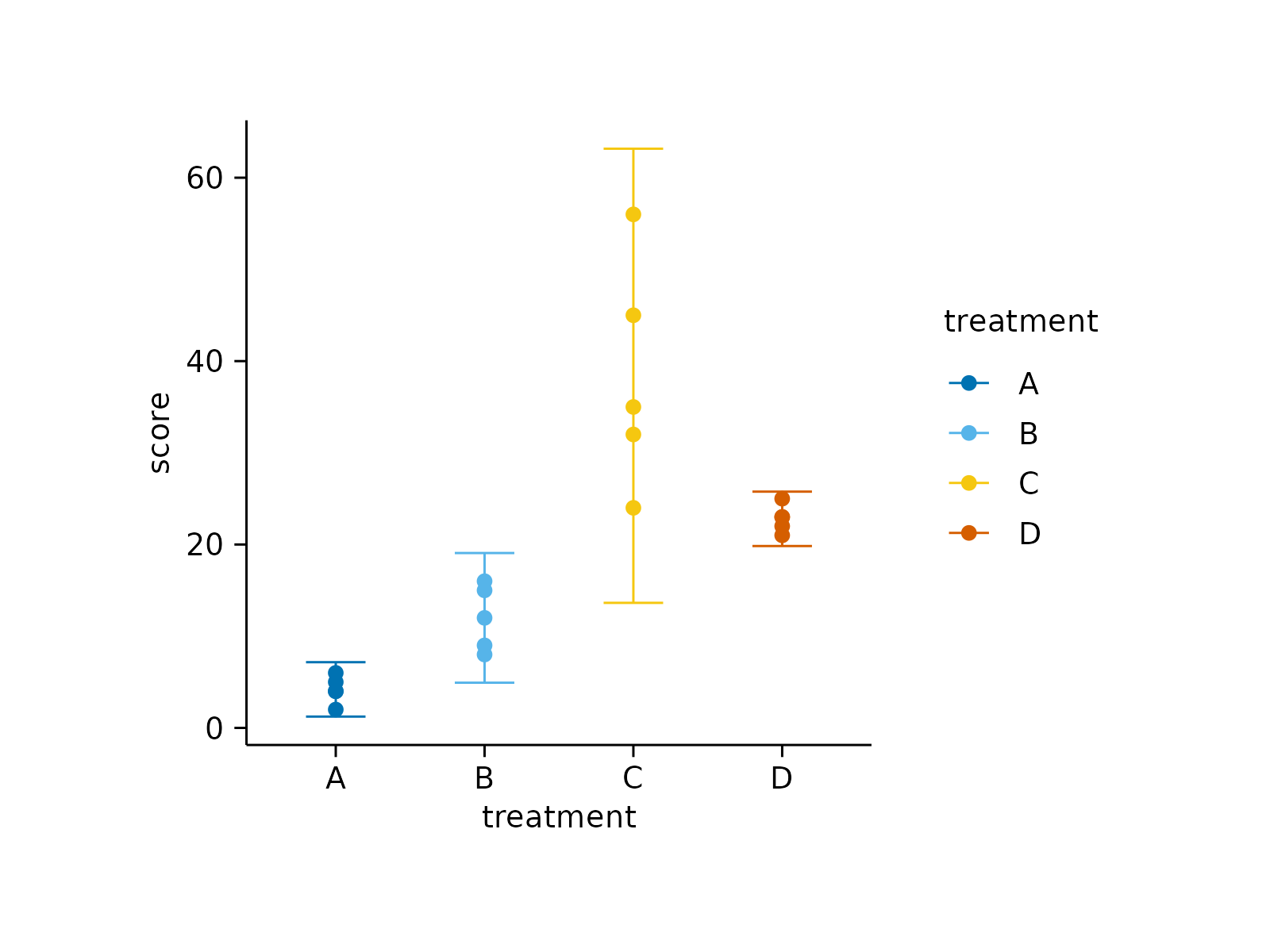 # 95% confidence interval
study |>
tidyplot(x = treatment, y = score, color = treatment) |>
add_data_points() |>
add_ci95_errorbar()
# 95% confidence interval
study |>
tidyplot(x = treatment, y = score, color = treatment) |>
add_data_points() |>
add_ci95_errorbar()
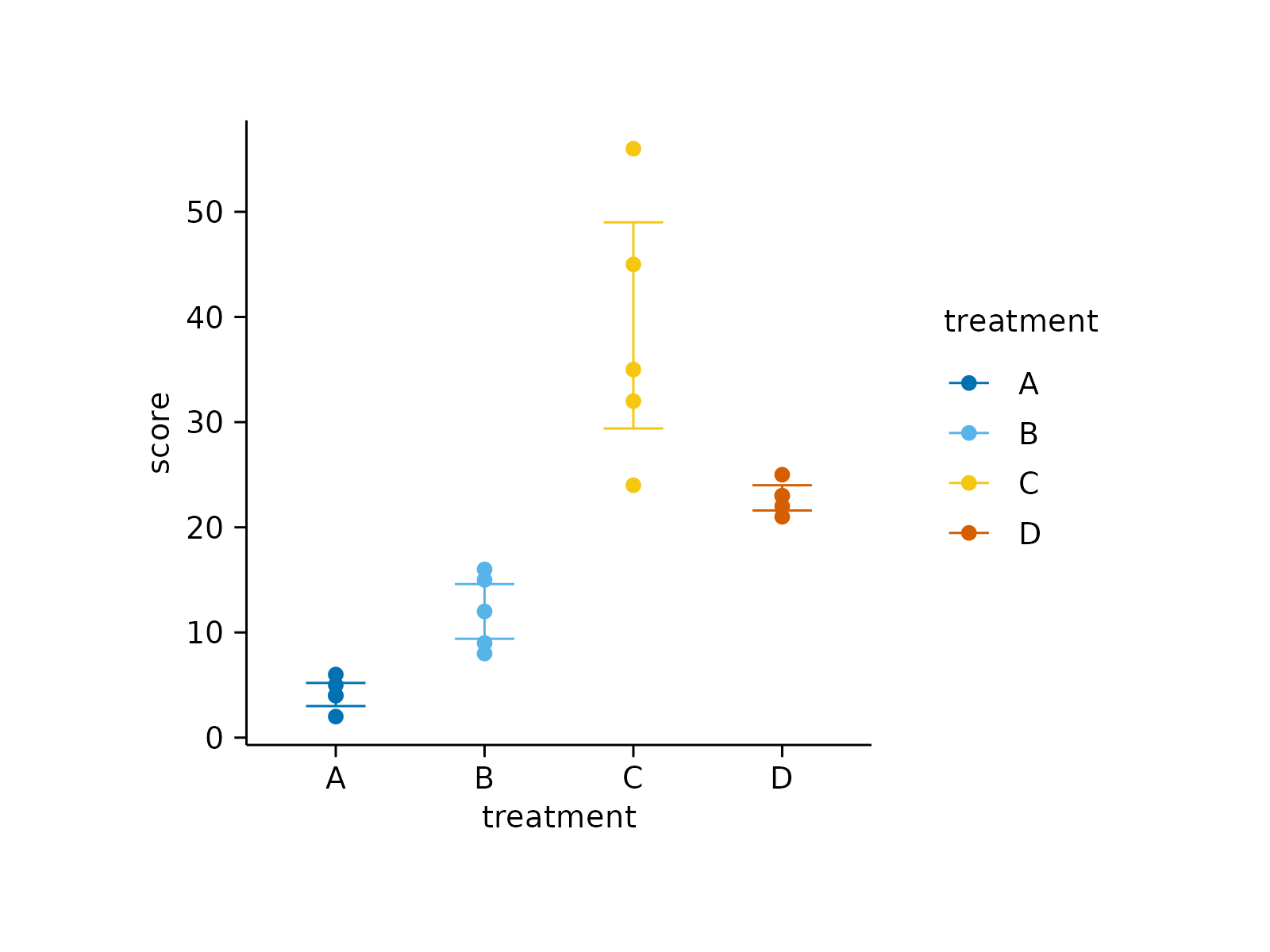 # Changing arguments: error bar width
study |>
tidyplot(x = treatment, y = score, color = treatment) |>
add_data_points() |>
add_sem_errorbar(width = 0.8)
# Changing arguments: error bar width
study |>
tidyplot(x = treatment, y = score, color = treatment) |>
add_data_points() |>
add_sem_errorbar(width = 0.8)
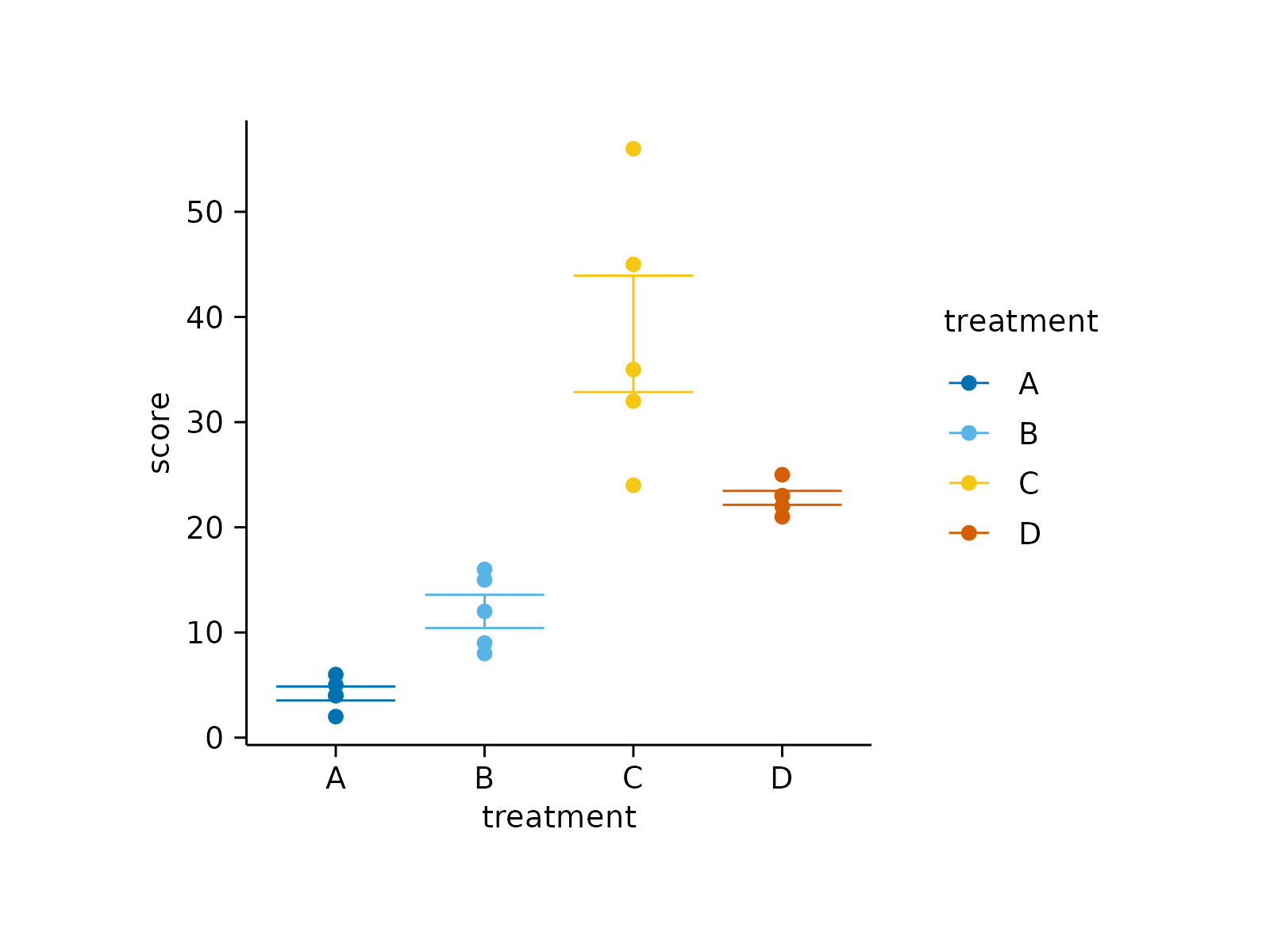 # Changing arguments: error bar line width
study |>
tidyplot(x = treatment, y = score, color = treatment) |>
add_data_points() |>
add_sem_errorbar(linewidth = 1)
# Changing arguments: error bar line width
study |>
tidyplot(x = treatment, y = score, color = treatment) |>
add_data_points() |>
add_sem_errorbar(linewidth = 1)
